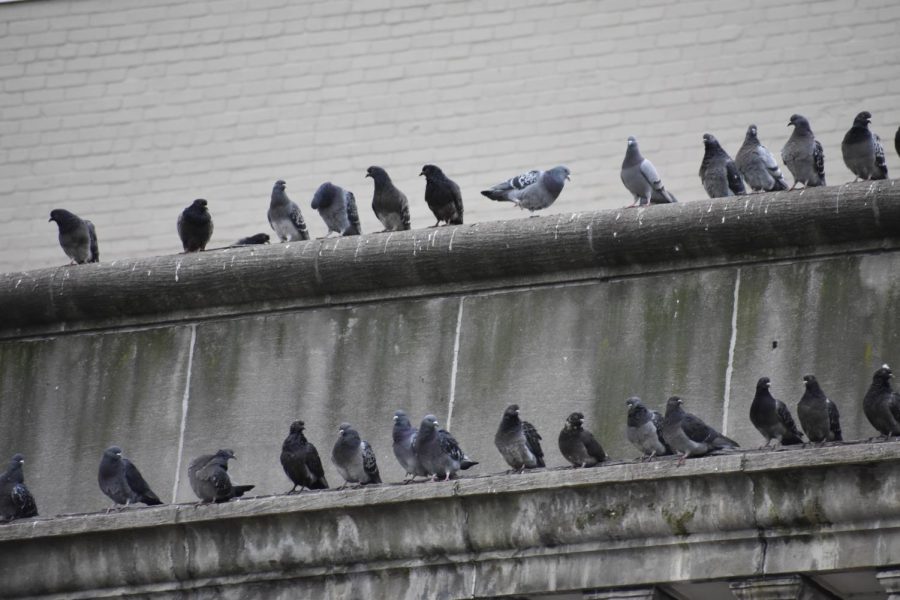‘Depressing:’ Fifth Avenue construction sends pigeons packing
Romita Das | Senior Staff Photographer
Pigeons sit on top of a building.
February 6, 2023
Should lovers of urban wildlife fear for the pigeons that frequented a recently razed parklet on Fifth Avenue?
Not really, says Pitt Birding and Ornithology Club President Garrett Sisk.
“They’ll just go find another spot,” Sisk said. “But I am glad people are concerned.”
The University owns the small parcel between Oakland Avenue and South Bouquet Street, and has allowed UPMC to use the space to “support construction” of a new hospital tower at the former Children’s Hospital site, according to University spokesperson Nick France.
Corinne Kerwin, a first-year gender, sexuality and women’s studies major, is among those concerned for the pigeons. She tweeted a photo of the “sludgified” spot on Jan. 26, which until recently was covered in grass instead of gravel. The area also featured a few benches where students and residents would congregate to feed the flock of several dozen pigeons.
“Emotional because the little patch of green on Fifth Avenue that the pigeons love is all demolished,” Kerwin said in a tweet.
literally just cleared and sludgified… now they just all squeeze together in the like foot wide section still left around the trees 💔 https://t.co/K8Hxj14Nsi pic.twitter.com/SLpmJESVLb
— crin 🙊 (@babyprincessinc) January 26, 2023
“This is just depressing,” one user replied.
France said the pigeons likely frequent several spots around campus, and the University doesn’t consider them a nuisance — rather, they’re “part of the urban ecosystem.”
Since construction began, the pigeons have taken to gathering atop the nearby Citizens Bank or the dirt patch between the gravel and an adjacent parking lot.
“The University works to minimize its construction footprints and seeks to improve habitation areas when work is completed,” France said, offering a recently installed rain garden behind the Cathedral of Learning lawn and the replacement of invasive vegetation with native species behind the Petersen Sports Complex as examples.
Kerwin lamented the loss of on-campus green space in recent years, including the lawn next to the Petersen Events Center, which predated her time at Pitt.
“It’s just kind of sad to see green spaces slowly disappearing, no matter how small they are,” Kerwin said. “And also just shared spaces in general where people can come together that aren’t in academic buildings … places where people can just go outside and exist together and alongside with nature.”
Pitt will return this latest bit of lost greenspace to its previous condition once it’s no longer needed for construction, France said. But it might not stay a parklet forever.
The Campus Master Plan identifies the parcel as ripe for redevelopment for “student life functions, housing, offices or innovation space,” without any specific plans.
The biggest loss, in Sisk’s view, is the social aspect of the parklet, though he didn’t condemn or condone feeding the pigeons. And while Sisk believes the pigeons will be alright, the three-time birding club president and environmental engineering major wants students to learn one thing from the recent attention on these birds — they’re not called pigeons.
“I always joke that if you learn one thing from the club, learn that it’s called a rock dove,” Sisk said. “That’s kind of my little club catchphrase.”








